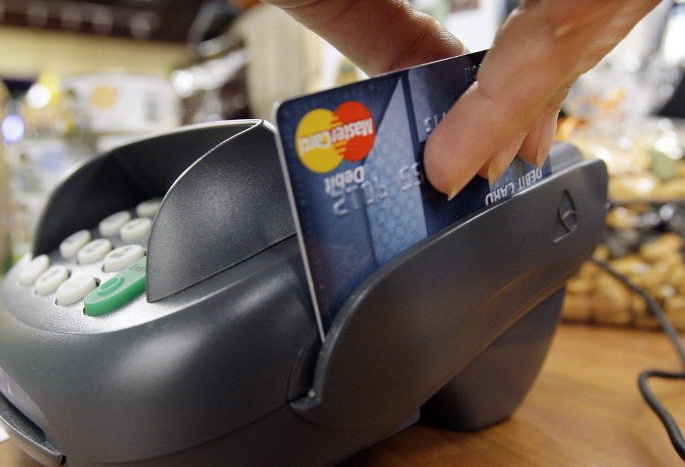What is overdraft - debit balance on the account of a client (individual, legal entity) arising as a result of overdraft lending.
It is the simplest unsecured short-term loan instrument. The essence of the overdraft: it is used to execute payment documents if the account is temporarily unavailable or insufficient.

Terms of use
The client, as a rule, can use the overdraft for one operation for the whole amount within the established limit, or in parts (in tranches). What overdraft? Essentially a loan, small short-term loan. It must be returned. The repayment date of each part (tranche) provided under the overdraft limit is the date of repayment of the debt in the amount of the provided part (tranche).
An increase in the overdraft limit is usually made after the client’s application (application) in the absence of overdue debts to the bank. The overdraft limit can be reduced by the bank in compliance with the requirements established by law and the rules of the bank itself.
The bank accrues interest on overdraft in the last banking day months, depending on the debt. After the client has paid the debt and accrued interest during the term of the service, the bank is entitled to provide an overdraft to the client under the conditions established by the contract. The overdraft amount can be used by the client to carry out any legal operations.

The procedure for providing salary overdraft
Overdraft for a salary card is provided on the main card only if a corresponding salary service agreement has been drawn up using a bank card between the organization that hired the client and the bank itself.
The beginning of the term for granting is considered the moment of debt formation after each transaction against the provided overdraft. The period of provision is counted from the moment the debt is generated. It ends with crediting money to your own account for debt accounting.
If the card is received under the conditions salary project while the client is working in the organization, his card is serviced according to the tariffs developed for the employing company. Tariffs can be clarified in your company. Often, employers pay from their funds the annual maintenance of cards issued to employees.
After dismissal from the company and receipt by the servicing bank of the corresponding notice, the plastic card becomes paid and then serviced in accordance with the current tariffs for debit cards. For annual service, of course, a commission is charged.
In case of dismissal, the card is not automatically closed. If the client would like to refuse the subsequent use of the card, it must be handed over to the bank employees by filling out an application. Important: if the card is dealt to the company, it does not automatically close. It is necessary to draw up an appropriate application on your own.

Credit overdraft
This is the provision of a specified loan in an amount that exceeds the remaining cash in the account on the basis of a special agreement (agreement). It is made by bank transfer or by using money in accordance with the instructions of the client, if a credit card with an overdraft has been issued earlier.
Prompt decision-making on the issue of lending plays an important role in modern conditions. Reducing the timing of decision-making on lending, the bank will attract more customers, increase revenue, increase its turnover.
How to connect overdraft? Registration will require the provision of an agreed package of documents. Each bank has personal requirements, conditions, obligations of the parties. However, they are subject to the law. Connection can be done on a declarative basis if the client wishes to add this service. Some institutions independently initiate the connection of the service, without a user’s declaration.
If you received a free card when applying for a loan, remember that its service is free only until the loan is repaid (also early). When repaying a loan, card service becomes paid, a commission is charged on it. In order to refuse the subsequent use of the card, it is necessary to hand it over to the bank employees by filling out a closing application.

How is the calculation made?
Overdraft calculation is a complex mechanism. Depends on the bank's policy, terms of provision, solvency, customer reputation. First, determine the credit limit. For this, bank employees use a mechanism for assessing potential risks in their calculations.
The easiest way to calculate the limit for salary cards. Therefore, overdraft is readily tied by banks to salary cards. Based on extracts from salary accounts, managers track the frequency of receipts and the amounts accrued to the employee of the enterprise. Based on the data, a limit is determined. It is adjusted monthly depending on the average monthly total turnover of the settlement accounts opened by it at the bank.
Large banks post useful information on their websites. A client who has executed the service and used the overdraft can find out the required amount of deductions on the official website of the bank using a credit calculator.
Debt relief
The money credited to the account first participates in the repayment of the technical overdraft (if any), then the interest, the principal debt in the manner prescribed by the overdraft agreement. You can pay off all types of debt in cash. Repayment of the overdraft on the account upon dismissal of the client from the organization appearing in the contract is made:
- writing off the full amount of debt with a payment order from all client accounts opened with the bank associated with other cards;
- in cash;
- crediting money to the account with their subsequent debiting by the bank to pay off the remaining debt.
In case of termination (termination of the overdraft agreement), the client is obliged to pay off all debts on the account no later than the day of termination (termination of the overdraft agreement), unless otherwise provided by the agreement.

Overdraft for business
What is an overdraft for a business? Its action is not fundamentally different from overdraft for individuals. The same mechanism for providing relatively small amounts for the short term. Since it is important to have a choice in business, overdraft for legal entities can be of different types. The conditions depend on the particular bank and the needs of the company. In general, there are 4 main types:
- When a company needs to close its short-term cash needs for one to two weeks. It has a maximum period of use of the tranche of 15 days (average value).
- Additional funds are required for up to 1 month (35 days).
- Bank overdraft on special conditions at the refinancing rate for legal entities with large average monthly account balances.
- For those companies that cannot determine in advance how long they will need the money. It has a certain deadline for tranches, and its cost does not depend on the period of use of money.
The interest of the financial institution to cooperate with a reliable borrower is clear. Analysts evaluate and analyze quantitative and qualitative indicators of the financial and economic activity of the enterprise, calculate credit rating.
Legislation
All issues related to the provision of an overdraft are decided by the recipient and the bank (its additional office, branch) on the basis of a separate agreement or an additional agreement to the agreement. The overdraft is subject to the loan and loan rules established by Ch. 42 of the Civil Code of the Russian Federation, which determine:
- overdraft agreement (subject of agreement);
- overdraft limit;
- procedure for issuing an overdraft, its repayment;
- term of use;
- conditions, interest rate, frequency of its changes;
- mutual obligations, the responsibility of the institution and the client for the improper fulfillment of the required conditions of the agreement.
When issuing an overdraft loan, many banks do not require the organization to mortgage property, provide guarantees, other guarantees of third parties. Adequate collateral is the turnover of funds in the current account. This indicator directly affects the limit of funds provided by the bank.
Network overdraft
The meaning of the "network" overdraft is the increasing number of attracted customers. With this scheme, banks usually apply the minimum interest. The more a client of a bank who has concluded an agreement (agreement) for overdraft services attracts partner enterprises or subsidiaries (holdings) to receive an overdraft, the lower the interest rate on the loan.
For example, if 1 to 5 partners are involved, then the rate is 17%. From 6 to 10 partners - a rate of 15.5%. From 10 and more - 13% (the discount depends on the conditions of the financial institution). To take advantage of such preferential loans, the company that attracted partners must submit an application to the servicing bank about the possibility of using a “network” overdraft.
Unauthorized Overdraft
Technical overdraft - a debit account balance that was not provided for by setting an overdraft limit. In plain language - this is an overspending of funds of the client, unauthorized by the bank. As a rule, it is not any deliberate action by the user or financial institution.
If an unauthorized overdraft occurs - for example, the bank does not provide an overdraft on the card, but it is accepted by the client, or the client's debt exceeds the amount of the previously provided overdraft limit - the client must repay it. Overdraft limit - the maximum amount of overdraft loan debt for each day (calendar). More often makes up 40-70% of the amount of monthly income.
Bank repayment terms are agreed in advance. As a rule, this is 3 banking days from the date of notification of its occurrence. If paid on time, commissions are usually not taken.
Causes of technical overdraft
- Change in exchange rates in the calculations. If you pay with a card abroad or on the Internet on foreign sites, from the day the transaction is completed to the day when information about it arrives at the bank, the rate may change, and as a result there may not be enough money.
- When making payments through imprinter, a device that does not have electronic communication with the bank. The card is rolled through this device, and the data remains on a special check. As a rule, such devices are not common and, mainly, abroad.
- When replenishing a card through an ATM with the function of accepting cash and subsequently withdrawing this amount, if the information on the withdrawal operation was received by the bank earlier than the information on the replenishment operation.
- Upon receipt of information about a completed transaction on the card after the amount previously blocked for payment of this operation is unlocked.The amount, as a rule, is blocked for 30 days, then, if the information about the transaction has not been received by the bank, it again becomes available to the client.
- When performing operations with Visa cards without authorization. In this case, a request is not sent to the bank for the possibility of conducting the operation. Such operations are possible only within small amounts. They differ depending on the type of outlet, country and type of card (Visa Classic, Gold or Platinum).
- Other reasons caused by a technical malfunction, unauthorized operations, write-off of previously erroneously credited funds or previously erroneously issued funds and other reasons that entailed card transactions for amounts exceeding the balance of money on the card account or the amount of the overdraft loan granted .
Notification Methods
The notification can be made preliminary orally by the phone numbers indicated by the client when filling out documents for opening a card account and issuing a card. In case of non-repayment of the technical overdraft for a certain period from the date of oral notification or the inability to notify the client, the bank verbally sends the corresponding written notice to the address indicated by the client in the contract.
If these conditions are not met, the overdraft shall be fined. For the presence of an outstanding unauthorized overdraft after a period prescribed by the contract has elapsed since the date of verbal informing the client or from the date the bank sends the written notice, a fine may be imposed in the amount approved by the decision of the bank's board. The amount of the fine is debited from the balance of the client’s funds by the bank independently.
Interest rate change
If the interest rate for using the overdraft has changed, it is necessary to renew the additional agreement to the contract. The client is entitled to disagree with the new loan conditions. In this case, early repayment of accumulated overdraft debts and accrued interest for its use is made.
If the contract provides for a forfeit, the fees due to the bank within the agreed period from the date the interest rate changes, they will also have to be paid off. At the same time, overdraft arrears are calculated at previously applicable tariffs (until the interest rate changes).
In this case, the client’s refusal to conclude an additional agreement shall be deemed to be received by the bank within the time period established for concluding the additional agreement, a written message about disagreement with the new interest rate or the bank not receiving the client’s response within this period.
Penalties
Penalties are charged for untimely return to the bank of the amount of money received from the previously provided overdraft and untimely payment of interest for using the overdraft within the time periods specified in the contract, in accordance with the legislation and conditions of the financial institution.
If the overdraft is not repaid within the terms established by the contract, the bank customers, as a rule, pay increased interest. They are charged on the amount of overdue debt on the principal loan debt in the amount of the interest rate established for using the overdraft and specified in the overdraft agreement and increased by 1.3-2 times.

Mutually beneficial cooperation
The overdraft system is beneficial to both financial institutions and citizens. Currently, during the growing crisis of the banking sector, almost all banks in the country need to look for ways to continue to exist.
Attracting more customers to a financial institution will increase its income, including through short-term loans (loans). Therefore, providing overdraft for consumers is a completely profitable enterprise.Interest received on loans and other placed funds is the main element of the bank’s income, and therefore, one of the ways to stabilize the financial situation.
What is overdraft for citizens? In fact - a microloan. It allows you to borrow the necessary amount of money needed at the moment. Interest is paid only for funds actually spent. When overdraft, all amounts credited to the account, first participate in the repayment of debts, therefore, the amount of microcredit changes with the receipt of funds.
Who took the overdraft, reviews are often positive. The system works on a pay-to-pay basis. This is more convenient and faster than borrowing money from other people. More profitable than putting values in a pawnshop. The interest is small, with timely repayment, the penalty may not be charged at all (depends on the contract). Advantages of providing the service:
- ease of receipt;
- quick access to credit resources;
- lack of a mandatory requirement for the provision of property support.
Overdraft is a mutually beneficial financial instrument. It is important to dispose of it wisely, not to accumulate debts, to comply with the terms of the contract.








